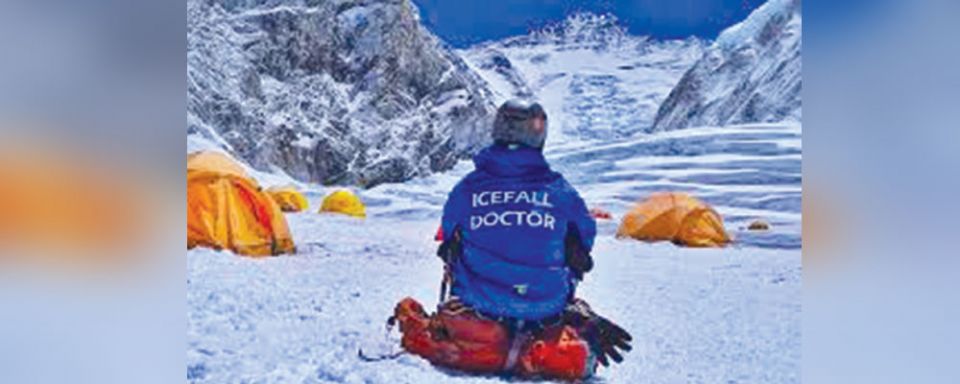
By A Staff Reporter,Kathmandu, Apr. 18: As the Mount Everest climbing season approaches, icefall doctors have cleared the climbing route from Base Camp to Camp I on Wednesday.
Lama Kazi Sherpa, Chairman of the Sagarmatha Pollution Control Committee (SPCC), said that the icefall doctors placed ropes and ladders on the hazardous sections of the Khumbu icefall to facilitate the climbers.
A team of 27 individuals from the SPCC was mobilised to reach Base Camp, with eight icefall doctors tasked with opening the climbing route. The remaining 16 to 17 team members are responsible for carrying human waste down to Laguche, around two hours from Base Camp.
They transport human waste accumulated over 40 to 50 days to Laguche and bury it in the area.
According to Sherpa, the team of icefall doctors comprises Ang Sarki Sherpa, Dawa Nuru Sherpa, Pemba Tshering Sherpa, Ngima Tenzi Sherpa, Nawang Chhimi Sherpa, Dawa Chhiri Sherpa, Dawa Zangbu Sherpa, and Mingma Gyalzen Sherpa.
The icefall doctors are expected to ascend above the Western Camp by this evening. “The icefall doctors have successfully reached Camp I, after arduously installing ladders and ropes along the icefall section,” Sherpa confirmed. He noted that it took them around a month to reach Camp I, considering it is the most perilous and intricate route beyond the Base Camp.
The icefall doctors attempted three different routes to accomplish the mission. “Although the route they established is still deemed somewhat hazardous, the icefall doctors will closely and continuously monitor the fragile sections,” Sherpa said. The team of SPCC has only been assigned to fix a route up to Camp II, he informed.
The icefall doctors have been stationed in the mountains for about three months. The team deployed in the Khumbu area is responsible for maintaining three mountaineering routes -- Mount Everest, Lhotse, and Nuptse, all accessed through the Everest Base Camp.
The climbing season for Mt. Everest typically starts in late March, originating from the Base Camp on the southern side of Everest in Nepal, situated at an altitude of 5,300 metres. This side
of Everest is favourable for climbers owing to its accessibility and relatively safer climbing conditions.
The southern route via Nepal is the most popular among climbers due to several factors. Firstly, the logistics for climbing from the Nepal side are generally considered more straightforward compared to the northern route from Tibet. Nepal has a well-established infrastructure for mountaineering expeditions, including established trekking routes, tea houses, and support services.
To date, the Department of Tourism has issued 274 climbing permits for Everest, 40 for Lhotse, and 12 for Nuptse, according to media reports.
The government collects USD 11,000 as royalty from each foreign climber to issue a climbing permit for Mt. Everest.












